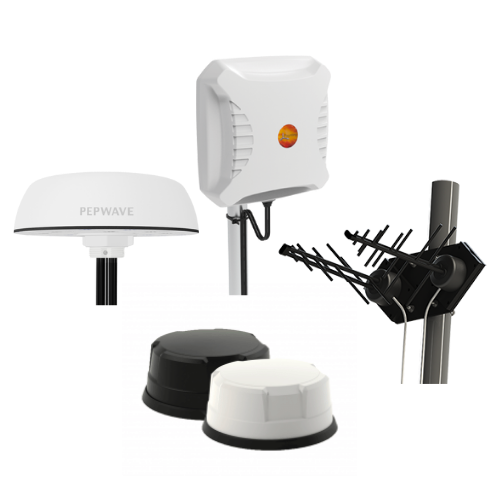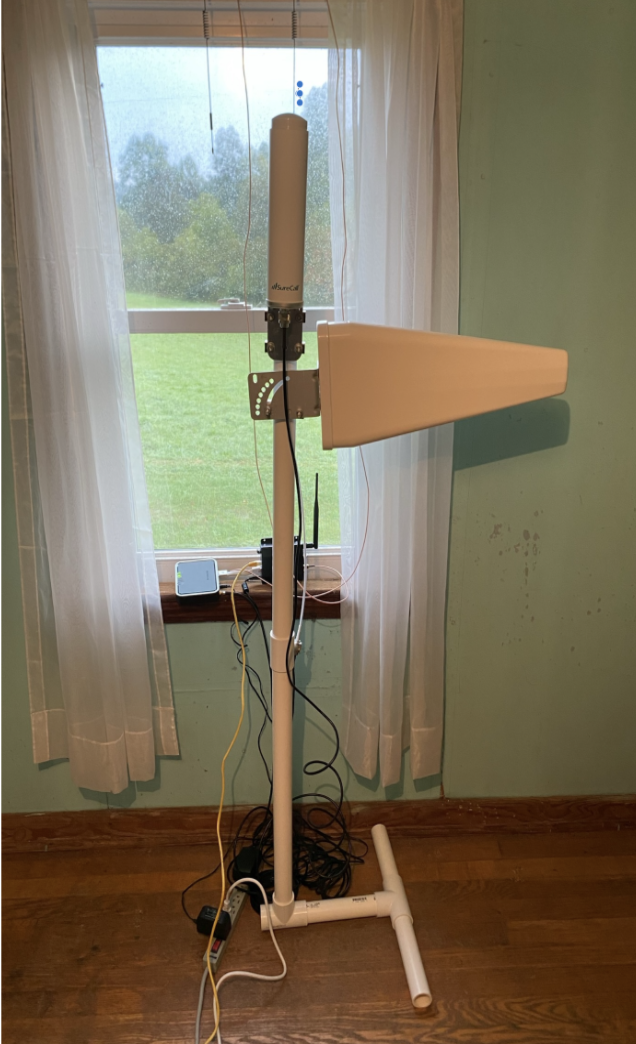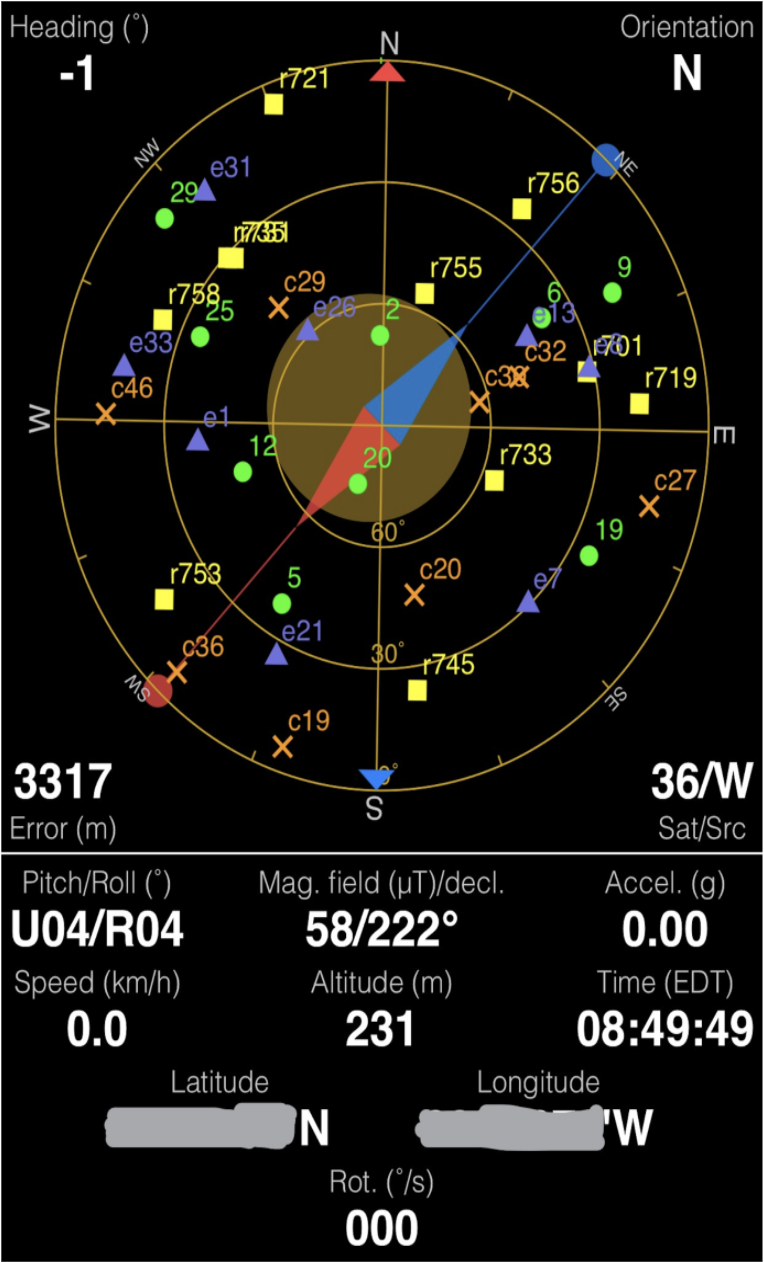
Before you start the search for an outdoor antenna for your router, consider the following questions:
- Do you need a cellular antenna, WiFi, GPS, or something that combines these connections?
- How/ where do you need to mount and how far is it in relation to your cellular router?
- This will help determine the amount of cable needed.
- Does the antenna include cable? Is it enough or will you need more?
- Will your application be traveling or stationary?
- Most travel applications and locations in more suburban/ urban areas should use an omnidirectional antenna
- Use a Directional antenna if there is little to no obstructions between your location and the cell tower, and:
- You are in a weak signal location
- There is only one tower in your area
- What cellular frequencies does your router support?
- Ensure you select an antenna that covers the same, or more frequencies than your router. These are listed in the specifications of your router and the antennas.
- What type of connectors does your router use, and how many ports are there?
- This will allow you to confirm the connector type(s) needed on the antenna cable.
- Does the antenna need to meet certain size requirements?
Gain
Gain is another factor to consider when selecting your antenna. Gain can be thought about like focusing the signal. The higher the gain, the more focused the antenna is on the signal in a particular direction. For an omnidirectional antenna, imagine a ball that flattens, extending outward. For a directional antenna, imagine a cone is made longer but the base of the cone is made smaller. A lower gain antenna might not have as much range as a high gain antenna, but it does allow for a wider degree of sight to the tower. This can be important to note for mobile applications, especially marine as boats will rock on the water at varying degrees.
Frequencies (from Peplink)*
- Low band: 600-960MHz
- Mid band: 1700-2700MHz
- High band: 3400-4200MHz (5G)
- ISM band: 5100-6000MHz (5G)
*The frequency band naming is not official and was made for easier explanation and comparison.
Example Antenna Solutions
Note the specs at the links below. Some include cable, which range in length from 6-15ft, others do not include any cable.
*MiMO Antenna Solutions
When you have a device that requires multiple antenna connections, look mainly at products from MobileMark, Panorama, Pepwave, and Poynting.
| 5G/ Cat 18 Cellular ONLY | LTE Cellular ONLY | WiFi | LTE & 5G Cell + GPS | LTE & 5G Cell + GPS + WiFi |
| Omnidirectional Antennas | ||||
| Panorama MAKO Dome Antenna for 4×4 Cellular/5G | Panorama Omnidirectional MiMo Wall Mount Antenna | Pepwave Mobility 02 2 x WiFi Dome Antenna | Pepwave Mobility 40G 5-in-1 Dome Antenna for LTE/GPS | Pepwave Mobility 22G 5-in-1 Dome Antenna for LTE/WiFi/GPS |
| Directional Antennas | ||||
| Panorama 4×4 MiMo 4G/5G Directional Antenna | Panorama Directional 2×2 MiMo Wall Mount Antenna | Directional WiFi Panel Antenna (2.4Ghz) | Pepwave IoT 20G Panel Antenna for MiMo Cellular/5G & GPS | — |
*SiSO Antenna Solutions
When you only need a single antenna connection, look mainly at products from MobileMark, Panorama, Poynting, and SureCall.
Location of Install
If needed, further narrow down results by the type of location you will be installing the antenna.
*Fixed MiMO
This list includes mobile antennas, which can be used with included or additional mounting hardware for fixed installation.
| LTE | 5G/ Cat18 (Limited Range) | 5G/ Cat 18 (Full Range) | Cell + GPS + WiFi | WiFi |
| Omnidirectional | ||||
| Panorama Omnidirectional MiMo Wall Mount Antenna | Pepwave 20G Maritime Antenna for MiMo Cellular/5G & GPS | Panorama Dome Antenna for 2×2 MiMo Cellular/5G | Pepwave Mobility 40G 5-in-1 Dome Antenna for LTE/GPS | Pepwave Mobility 02 2 x WiFi Dome Antenna |
| Directional | ||||
| — | Poynting XPOL Directional MiMo 4G/5G Antenna | Panorama 4×4 MiMo 4G/5G Directional Antenna | Pepwave IoT 20G Panel Antenna for MiMo Cellular/5G & GPS | — |
*Mobile MiMO
| LTE | 5G/ Cat18 (Limited Range) | 5G/ Cat 18 (Full Range) | WiFi |
| MobileMark LTM Thru Roof Antenna | Pepwave Mobility 22G 5-in-1 Dome Antenna for LTE/WiFi/GPS | Panorama Dome Antenna for 2×2 MiMo Cellular/5G | Pepwave Mobility 02 2 x WiFi Dome Antenna |
| Pepwave 40G Maritime Antenna for 4×4 Cellular/5G & GPS | — | — | — |
If you need assistance selecting an appropriate antenna, don’t hesitate to reach out to the 5Gstore team by phone or chat!







